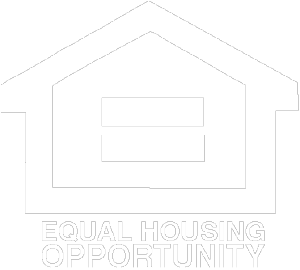Modular and Manufactured Homes for VA Buyers
Manufactured homes are often called mobile homes, and they can be referred to with regard to their size as a “single-wide” or “double-wide.” You’ve probably seen one on a huge flatbed truck being transported on the freeway. The double-wide would take two trucks because it’s twice as big! To obtain a real estate loan to purchase a manufactured home, they have to be affixed to a permanent foundation, not in a mobile home park on a rented space. Mobile home parks commonly make a business of renting the ground or space that the unit is parked on. This differentiation is the biggest distinction between a “mobile home” and a manufactured home. You can’t get real estate financing on land that is leased or rented with a dwelling that can be towed away!
Double-wide manufactured homes can be a very economical living space, and when placed on a permanent foundation, on a piece land that you own, well that’s “real property,” the true definition of real estate! And this kind of home can get VA financing under certain circumstances.

Modular homes (or prefabricated homes) are very nice homes that modular home builders construct with a variety of floor plans. The dwelling is built out of several different stock parts, and the modular home company assembles the prefabricated elements together on the lot very quickly. Modular homes are never assembled on rental space. They are always constructed on a lot with a fixed or poured concrete foundation. The modular home could easily be considered an upgrade from the manufactured home. It is typically a larger home than the square footage available with a double-wide, and it usually has a more custom, roomy feel.
Still, the process of creating either finished home is a daunting task. Here’s a sample checklist. You must:
-
Qualify for the financing.
-
Find a lot (with utilities or set up utilities).
-
Find the right manufactured home or modular home builder.
-
Ship the home to the site or assemble the house on the selected lot.
-
Appraise the home and fund the purchase loan.
-
Move-in!

VA buyers, who are often raised in communities with lower costs for housing, are attracted to manufactured and modular homes because it seems very economical. Their logic is sound because someone may be able to purchase a lot for under $100,000. An attractive manufactured house may sell for as little as $50,000. The $150,000 price tag on the finished home (likely in a more rural area) may look very appealing compared to the cost of a $300,000 “tract” home in busy Southern California suburbia.
Your manufactured home could potentially cost much less than the Southern California tract home that was built 15-40 years ago. And it may be brand new! However, there are likely some drawbacks and difficult challenges to overcome if this is your plan. One obvious drawback or comparison could be the quality of construction and materials used to build the home. There is no comparable substitute for a typical “stick-built” piece of real estate. “Stick-built” is an industry term that describes the construction with “sticks” or two-by-four pieces of wood, common with nearly all typical real estate.
Let’s assume you are agreeable to the quality associated with a manufactured or modular home. Let’s also assume you want maximum VA financing at 100% of the finished value of the home. Your biggest hurdle will likely be for the appraiser to find accurate comparable sales.
If your subject property will be in an area that does not have several manufactured or modular homes that have recently been sold, it presents a problem. It is difficult for the lender to truly determine what the finished home will be worth because the values of these alternatively constructed homes are typically lower than the values of the stick-built homes. Without several, very recent comparable (manufactured or modular home) sales close to the subject property, the appraised value is then in question. In certain regions, these types of homes are simply not that popular. All loan underwriting, including VA underwriting, looks for the following information in an appraisal to get comfortable with the value stated from the appraiser:
-
Comparable sales need to be of the same “asset class,” the same kind of construction.
-
Recent comparable sales need to have closed within 6 months of the appraisal date.
-
Comparable sales need to be within close proximity, less than a mile away from the subject property.
-
Comparable sales are to be of similar age, condition, and amenities, if possible.

Of course, if you had the means, you could pay cash for both the lot and the home! Why worry about an appraisal and financing if you don’t have to! Well, the tremendous benefits of VA financing enable you to get zero down and zero closing. Are there financing alternatives when trying to buy one of these types of homes? Yes. Some of these manufacturers will create their own financing at 11.9% – 15.9%, and they may require some sort of down payment. That can be an alternative to traditional real estate lending but at credit card rates. Do you want to pay rates typical of “unsecured” lending (loans without liens recorded at the county) on real property? Why bother? You would be buying an inexpensive home with very expensive financing. Unfortunately, that is all too common though.
Some buyers may even pay cash for a lot. And then they finance the manufactured home with a 20% down payment at higher rates in the “teens!” The home manufacturer doesn’t care about the foundation or if it’s ultimately defined as real property. That financing is not like a real estate loan. That’s more like an installment contract or a car loan because it’s such a high rate. Some manufactured home companies provide that kind of financing because it’s hugely profitable! They are not real estate lenders making “secured loans” (with recorded liens in the county office) on the land and the dwelling at lower rates.

By now, you know that it’s all about the financing. If there are 100 lenders in the community that will make a VA loan, perhaps only 10% of them will underwrite and finance a manufactured or modular home. And the rate will always be 3/8% to 1/2 % higher. The riskier deal is also going to come at a higher rate because this type of real estate is considered less desirable. If the lender has to foreclose and re-sell the home, the universe of potential buyers who want a manufactured home will be smaller than normal. More risk = higher rates.
If you have managed to overcome the hurdles so far, you would still need to qualify for VA financing in the same manner that you would if you were buying a traditional home or even a custom renovated home through our Dreamweaver Home Purchase Process™. Remember, all loans are underwritten while considering equity, credit, and income. Equity or the amount of down payment is not a consideration with VA financing. However, credit must meet minimum standards, and income must be able to support the new housing payment.
The idea of buying a manufactured home is sound. But to be successful in your purchase, you typically have to be in a community where this kind of transaction is common…not the exception. This plan can work for some people in some parts of the country. But most Southern California communities are not really ideal for this kind of transaction. The idea of living in a manufactured home tends to be more appealing in rural communities. Yet in rural communities, the population density is such that the homes don’t sell frequently enough to generate the proper selection of comparable sales to satisfy the appraisal, which as a result satisfies the lender. It can be done…but know what you are up against!
For assistance with purchasing a manufactured home, let So Cal VA Homes help. Call us at (949) 268-7742.





